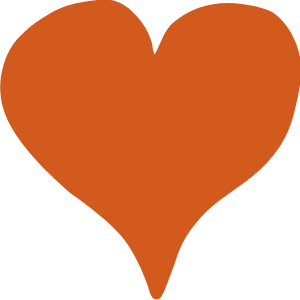Happy Easter everyone! Here’s a handy way to draw an egg shape using maths.
You will need
What you will need.
- Pin board, or several sheets of corrugated cardboard
- 3 drawing pins
- String
- Pen or pencil
- Paper
- Coloured pencils for decorating
- Scissors
What to do
- Draw 3 dots on the paper in the shape of a T. Make the stem of the T around 12 cm, and each arm of the top of the T around 4 cm.
- Put the paper on the pin board, and push pins through the 3 dots.
You only need a little bit of slack in your loop.
Cut a length of string, and make a loop that fits around the pins with only a little slack in it.
- Put a pen in the loop, and pull it out until the string goes tight.
- Keeping the string tight, move the pen around the pins.
- Congratulations! You have drawn an egg shape. Now you can decorate it.
What’s happening?
An egg is a very strange shape. It’s like an oval, but it’s slightly rounder at the bottom, and pointier at the top. It is symmetrical when rotated on its end, or flipped left to right (or right to left). It is also a very hard shape to draw by hand because it is so close to an oval.
Keep the string tight while drawing the egg shape.
If you use the technique above, but you only use two drawing pins, then you get an ellipse. Every orbit of every planet in our Solar System is in the shape of an ellipse. Perhaps surprisingly, the Sun is not located at the centre (between the pins), but at one of the pins!
When you use three pins, the pen is always between just two of the pins. The third pin is just holding the slack of the string. So you’re actually drawing parts of three different ellipses, joined together. When you draw one side of the egg, you get an ellipse around the top pin and a side pin, and when you do the bottom, you get an ellipse from the two side pins.
There are many different mathematical equations that describe the shape of an egg. Eggs are not all the same shape, so no equation describes all eggs perfectly.
The egg shape is made of three ellipses
Why are eggs egg-shaped?
The finished egg!
Eggs do not start out egg shaped. While they are forming inside the chicken, they are very round, and they don’t have a shell. When the egg is almost ready, the chicken pushes it towards the end of the oviduct (the tube that eggs travel down to get out of the chicken). The squeezing makes the egg into an egg shape. While it is being pushed, the egg grows a shell around itself!
Luckily, the egg shape has a lot of benefits. The top of an egg is a small dome shape, and the bottom of an egg is a larger dome. Domes are very strong shapes. They distribute force from the top evenly throughout their structure. The strength of the shape means that the material used to make a dome doesn’t have to be very thick.
Eggs are very strong if you push on them from all directions evenly because they are made of domes. Chickens are soft, and nests are soft, so the pressure of the chicken is even over the whole surface of the egg. This means chickens can sit on eggs without breaking them. If eggs were a different shape, the shell would have to be a lot thicker or they would break when the chicken sat on them. If eggshells were thicker, the chicks would have a hard time breaking out of them when they hatch.
Eggs also have another interesting property. They can roll, but they don’t roll away very far. Eggs tend to rest a bit towards their pointy ends. They are wider towards the round end and skinnier towards the pointy end, so the egg acts like a cone, and rolls around in a circle. This way, if an egg gets bumped, it doesn’t get lost, or fall out of a nest in a tree.
Birds that lay their eggs in holes tend to have rounder eggs than those that lay them in nests in trees or on top of cliffs. Eggs in a hole don’t have anywhere to roll away to, so they don’t need to be as pointy.
If you’re after more maths activities for kids, subscribe to Double Helix magazine!













Leave a Reply